Chuang Tzu 9
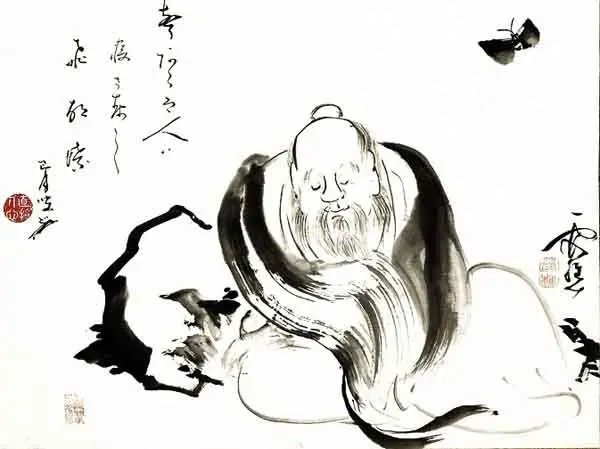
The Taoist Text, Chapter 9
Horses's Hoofs.
1. Horses can with their hoofs tread on the hoarfrost and snow, and with their hair withstand the wind and cold; they feed on the grass and drink water; they prance with their legs and leap:- this is the true nature of horses. Though there were made for them grand towers and large dormitories, they would prefer not to use them. But when Po-lâo (arose and) said, "I know well how to manage horses," (men proceeded) to singe and mark them, to clip their hair, to pare their hoofs, to halter their heads, to bridle them and hobble them, and to confine them in stables and corrals. (When subjected to this treatment), two or three in every ten of them died. (Men proceeded further) to subject them to hunger and thirst, to gallop them and race them, and to make them go together in regular order. In front were the evils of the bit and ornamented breastbands, and behind were the terrors of the whip and switch. (When so treated), more than half of them died.
The Book
The Taoism of Lao Tzu Explained. The great Taoist philosophy classic by Lao Tzu translated, and each of the 81 chapters extensively commented. Click the image to see the book at Amazon (paid link).
More about the book here.
|
The (first) potter said, "I know well how to deal with clay;" and (men proceeded) to mould it into circles as exact as if made by the compass, and into squares as exact as if formed by the measuring square. The (first) carpenter said, "I know well how to deal with wood;" and (men proceeded) to make it bent as if by the application of the hook, and straight as if by the application of the plumb-line. But is it the nature of clay and wood to require the application of the compass and square, of the hook and line? And yet age after age men have praised Po-lâo, saying, "He knew well how to manage horses," and also the (first) potter and carpenter, saying, "They knew well how to deal with clay and wood." This is just the error committed by the governors of the world.
2. According to my idea, those who knew well to govern mankind would not act so. The people had their regular and constant nature:- they wove and made themselves clothes; they tilled the ground and got food. This was their common faculty. They were all one in this, and did not form themselves into separate classes; so were they constituted and left to their natural tendencies. Therefore in the age of perfect virtue men walked along with slow and grave step, and with their looks steadily directed forwards. At that time, on the hills there were no foot-paths, nor excavated passages; on the lakes there were no boats nor dams; all creatures lived in companies; and the places of their settlement were made close to one another. Birds and beasts multiplied to flocks and herds; the grass and trees grew luxuriant and long. In this condition the birds and beasts might be led about without feeling the constraint; the nest of the magpie might be climbed to, and peeped into. Yes, in the age of perfect virtue, men lived in common with birds and beasts, and were on terms of equality with all creatures, as forming one family;- how could they know among themselves the distinctions of superior men and small men? Equally without knowledge, they did not leave (the path of) their natural virtue; equally free from desires, they were in the state of pure simplicity. In that state of pure simplicity, the nature of the people was what it ought to be. But when the sagely men appeared, limping and wheeling about in (the exercise of) benevolence, pressing along and standing on tiptoe in the doing of righteousness, then men universally began to be perplexed. (Those sages also) went to excess in their performances of music, and in their gesticulations in the practice of ceremonies, and then men began to be separated from one another. If the raw materials had not been cut and hacked, who could have made a sacrificial vase from them? If the natural jade had not been broken and injured, who could have made the handles for the libation-cups from it? If the attributes of the Tâo had not been disallowed, how should they have preferred benevolence and righteousness? If the instincts of the nature had not been departed from, how should ceremonies and music have come into use? If the five colours had not been confused, how should the ornamental figures have been formed? If the five notes had not been confused, how should they have supplemented them by the musical accords? The cutting and hacking of the raw materials to form vessels was the crime of the skilful workman; the injury done to the characteristics of the Tâo in order to the practice of benevolence and righteousness was the error of the sagely men.
3. Horses, when living in the open country, eat the grass, and drink water; when pleased, they intertwine their necks and rub one another; when enraged, they turn back to back and kick one another;- this is all that they know to do. But if we put the yoke on their necks, with the moonlike frontlet displayed on all their foreheads, then they know to look slily askance, to curve their necks, to rush viciously, trying to get the bit out of their mouths, and to filch the reins (from their driver); this knowledge of the horse and its ability thus to act the part of a thief is the crime of Po-lâo. In the time of (the Ti) Ho-hsü, the people occupied their dwellings without knowing what they were doing, and walked out without knowing where they were going. They filled their mouths with food and were glad; they slapped their stomachs to express their satisfaction. This was all the ability which they possessed. But when the sagely men appeared, with their bendings and stoppings in ceremonies and music to adjust the persons of all, and hanging up their benevolence and righteousness to excite the endeavours of all to reach them, in order to comfort their minds, then the people began to stump and limp about in their love of knowledge, and strove with one another in their pursuit of gain, so that there was no stopping them:- this was the error of those sagely men.
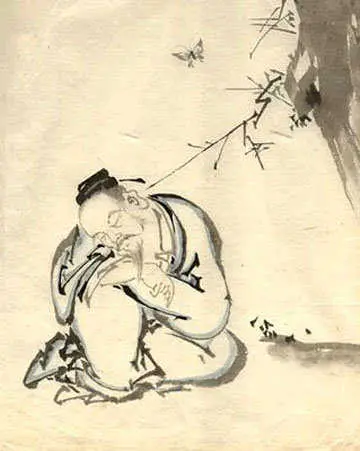
Chuang Tzu
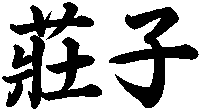
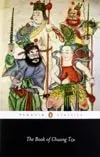
The Book of Chuang Tzu
A modern translation of Chuang Tzu, by Martin Palmer and Elizabeth Breuilly.
See the book at Amazon
My Taoism Books
Click the image to see the book at Amazon (paid link).
The Taoism of Lao Tzu Explained. The great Taoist philosophy classic by Lao Tzu translated, and each of the 81 chapters extensively commented.
More about the book here.
The Ancient Wisdom of the Tao Te Ching by Lao Tzu. 389 quotes from the foremost Taoist classic, divided into 51 prominent topics. Click the image to see the book at Amazon (paid link).
More about the book here.
Erroneous Tao Te Ching Citations Examined. 90 of the most spread false Lao Tzu quotes, why they are false and where they are really from. Click the image to see the book at Amazon (paid link).
More about the book here.
|
My Other Websites:
The 64 hexagrams of the Chinese classic
I Ching and what they mean in divination. Try it online for free.
The ancient Chinese life energy
qi (
chi) explained, with simple instructions on how to exercise it.
The many ancient and modern life force beliefs all over the world explained and compared.
Other Books by Stefan Stenudd
Click the image to see the book at Amazon (paid link).
The Greek philosophers and what they thought about cosmology, myth, and the gods.
The life energy
qi (also
chi or
ki) explained, with exercises on how to awaken, increase and use it.
Basic concepts of the peaceful martial art. Aikido principles, philosophy, and fundamental ideas.
Qi, prana, spirit, ruach, pneuma, and many other life forces around the world explained and compared.
Jungian theories on myth and religion examined, from Carl G. Jung to Jordan B. Peterson.
About me
I'm a Swedish author and aikido instructor. In addition to fiction, I've written books about Taoism and other East Asian traditions. I'm also an historian of ideas, researching ancient thought and mythology. Click the image to get to my personal website.




 Tao Te Ching
Tao Te Ching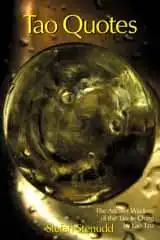 Tao Quotes
Tao Quotes Fake Lao Tzu Quotes
Fake Lao Tzu Quotes Cosmos of the Ancients
Cosmos of the Ancients Qi — Increase Your Life Energy
Qi — Increase Your Life Energy Aikido Principles
Aikido Principles Life Energy Encyclopedia
Life Energy Encyclopedia Archetypes of Mythology
Archetypes of Mythology Stefan Stenudd
Stefan Stenudd